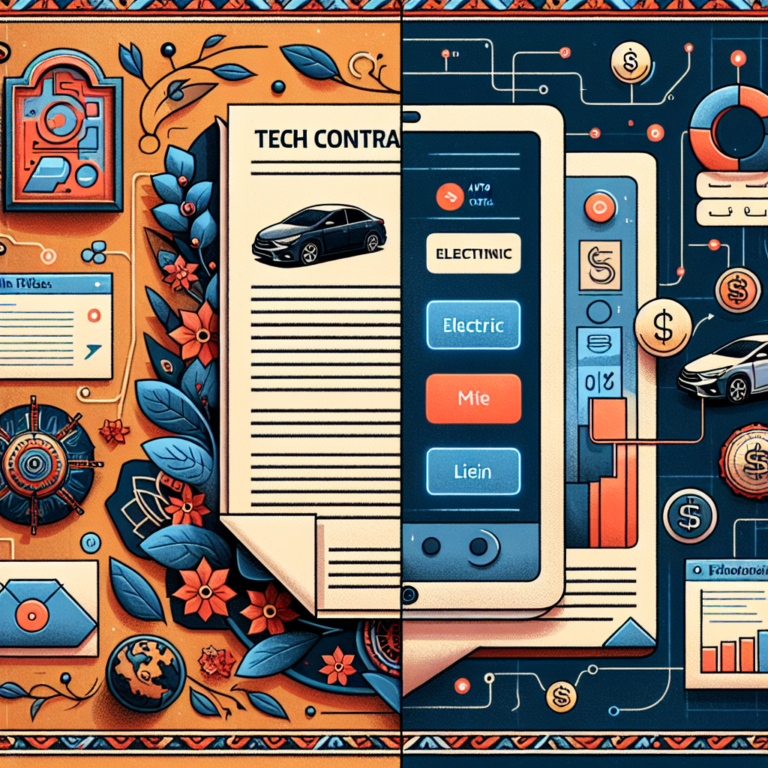In the rapidly evolving landscape of automotive financing, the introduction of electronic lien titles (ELTs) signifies a paradigm shift that intertwines technology with traditional practices. This innovation aims to streamline the process of vehicle ownership transfer, enhance security, and improve the experience for lenders, dealers, and consumers alike. As we delve into the advantages and implications of ELTs, it becomes clear that the integration of technology in auto financing is not just a trend; it is a necessary evolution in an industry long defined by paper trails and manual processes.
Understanding Lien Titles
Before exploring the impact of ELTs, it’s essential to understand what a lien title is. In the context of auto financing, a lien title is a document held by the lender that indicates their legal claim to a vehicle until the loan is fully paid off. Traditionally, lien titles are issued in physical form, leading to myriad challenges such as lost documents, potential fraud, and delays in processing when transferring ownership.
With the increasing complexity of auto financing and the growing importance of efficiency and security, the automotive industry has begun to embrace electronic alternatives that offer a more agile and reliable solution.
The Rise of Electronic Lien Titles
The concept of electronic lien titles emerged as states recognized the inefficiencies associated with paper titles. An ELT system digitizes the title, allowing for real-time access and updates. This shift not only digitizes existing workflows but also introduces technology-driven solutions to an age-old process, providing a host of benefits:
1. Enhanced Efficiency
One of the most striking advantages of ELTs is the increased efficiency they bring to the auto financing process. Transactions that previously required multiple steps, physical signatures, and potential delays can now be completed in a fraction of the time. With ELTs, lenders can electronically file lien releases and transfers, speeding up the process significantly for both consumers and dealerships.
2. Improved Security
Paper titles are susceptible to loss, theft, and forgery, risks that have long plagued the auto financing industry. ELTs mitigate these vulnerabilities by storing records electronically in secured databases. The digital nature of ELTs makes tampering virtually impossible and ensures that all transactions are traceable, reducing the risks associated with fraud.
3. Streamlined Processes
The traditional process of transferring a lien title often involves cumbersome paperwork and coordination between various stakeholders, such as lenders, dealers, and state motor vehicle departments. With ELTs, these interactions can be streamlined – reducing manual errors and administrative burdens. The system automates notifications and updates, ensuring every party involved has access to the latest information in real-time.
4. Cost Reduction
By reducing paperwork and associated administrative tasks, the adoption of ELTs can lead to significant cost savings for lenders and dealerships. Fewer physical documents mean less spending on printing, mailing, and paperwork storage. Additionally, the reduced time spent managing lien titles translates to lower operational costs, making auto financing more affordable for consumers.
5. Greater Accessibility
With an electronic system, lenders, dealers, and consumers have greater access to information regarding the status of vehicle liens. This accessibility empowers consumers by providing them clarity and confidence in their transactions. For lenders, it facilitates better risk assessment and decision-making, enhancing the overall health of their portfolios.
Challenges to Overcome
Despite the myriad benefits, transitioning to an ELT system is not without its challenges. A significant barrier is the varying legal frameworks across states regarding the acceptance of electronic titles. While many states have implemented robust electronic title regulations and systems, others remain anchored in traditional processes. Ensuring that all states adopt compatible ELT solutions will be imperative for nationwide implementation.
Additionally, there is a learning curve for stakeholders accustomed to traditional methods. Training and support will be essential to facilitate the transition and help users adapt to new systems and technologies.
The Future of Auto Financing
As the auto industry embraces technological advancements, the integration of electronic lien titles represents a significant step toward modernization. With consumers increasingly seeking faster, safer, and more efficient ways to finance their vehicles, the adoption of ELTs not only meets these demands but also helps the industry evolve in response to a digital-first world.
In summary, the integration of electronic lien titles in auto financing is more than just a technological upgrade; it blends the reliability of traditional practices with the efficiency and security offered by digital solutions. As we look to the future, embracing these innovations will be crucial in fostering a more accessible, streamlined, and secure auto financing landscape, one that honors tradition while embracing the potential of technology.


